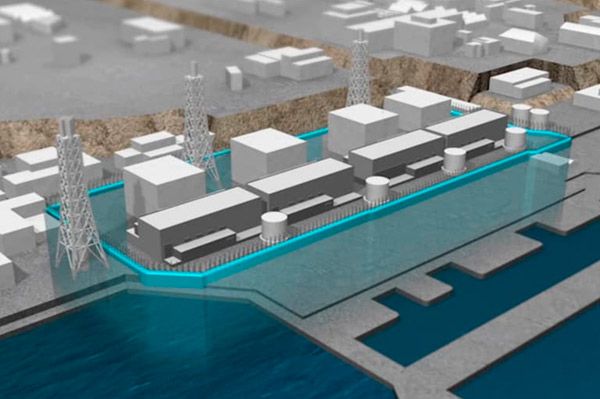New publications
Ice wall will help stop radiation from Fukushima
Last reviewed: 02.07.2025

All iLive content is medically reviewed or fact checked to ensure as much factual accuracy as possible.
We have strict sourcing guidelines and only link to reputable media sites, academic research institutions and, whenever possible, medically peer reviewed studies. Note that the numbers in parentheses ([1], [2], etc.) are clickable links to these studies.
If you feel that any of our content is inaccurate, out-of-date, or otherwise questionable, please select it and press Ctrl + Enter.

Fukushima is a Japanese nuclear power plant that became infamous around the world after the accident that occurred as a result of the powerful earthquake and tsunami that hit Japan in 2011. Today, one of the main problems of the power plant is the threat of a spill of water contaminated with toxic substances, and the Japanese government intends to strengthen measures to prevent the spread of radiation.
To block the radioactive water, an underground ice wall will be erected, which will completely surround the nuclear power plant; according to experts, this will significantly slow down the spread of contaminated water.
An ice wall, especially one built underground, may seem like science fiction at first glance, but in reality it represents a technique developed by engineers for drilling tunnels and extracting minerals, although the scale of such a wall was initially much smaller.
The idea behind the wall is to pump frozen salt solution through underground pipes, a method that will freeze the soil and seal off four nuclear reactors damaged by a natural disaster.
Recent water samples have shown elevated levels of radiation, with high levels of toxic substances found not only near nuclear reactors but also near the West Coast of the United States, indicating that radioactive substances are constantly leaking from the damaged nuclear power plant.
Workers at the Fukushima nuclear power plant have already filled steel sealed tanks made specifically for this purpose with tons of water from the reactors, but there are still places that are simply inaccessible to humans, since radiation in some areas is off the charts and even research robots there fail due to burnt wires. Groundwater flows daily to the reactors, as a result of which toxic substances penetrate into the sea and pose a threat to all living things on the planet, so this problem must be solved in the near future.
The construction of the ice wall began two years ago and is now in its final stages. The Nuclear Regulatory Agency has already approved the project, which is scheduled to begin in the coming days. The project's launch will mark the beginning of the Japanese government's planned actions to block the four failed reactors at the Fukushima nuclear power plant.

The wall will not be launched all at once, but in several stages, but the first of them accounts for more than 90% of the entire process. According to the NPP operator, a gap in the wall will prevent contaminated water from spilling out of the reactor, preventing the groundwater level from falling below the planned level. Only after the initial stage has proven effective (according to preliminary calculations, the groundwater flow should be reduced by half) and the appropriate permission to launch the remaining stages has been received, a solid wall will be installed around the four reactors of the Fukushima NPP. There are no clearly established schedules at the moment, but it is expected that the full launch of the Ice Wall project will take place during this year.
